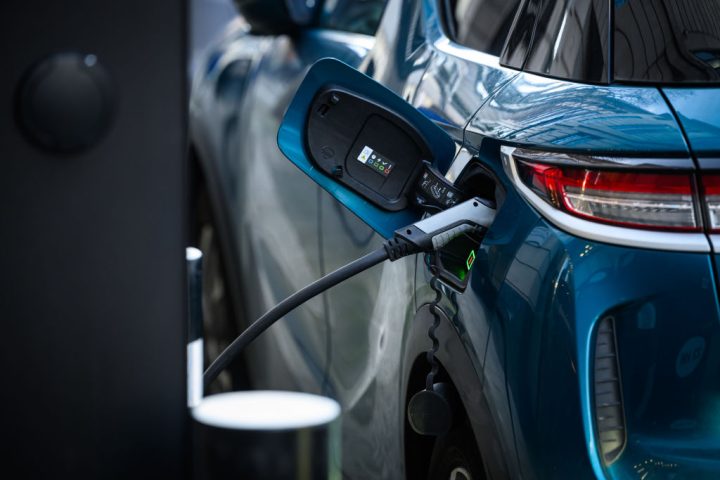By 2024, UBS confidently predicted in a October 2020 report, the cost of manufacturing an electric car would have fallen so sharply that it would be on a parity with the cost of a petrol or diesel car. If you have looked on Auto Trader recently you may well have been fooled into thinking that this has come true.
A quick search offered me a brand new Peugeot e-2008, its price slashed from £38,495 to £26,495. Or I could have a Vauxhall Mokka-e, down from £41,895 to £29,793. According to the car trading platform, 77 per cent of new electric cars on its website are being advertised at a discount – in some cases, as the above figures show, bringing them down close to the sort of price you would pay for a petrol or diesel equivalent.
Electric cars have established themselves as a premium project for well-off, environmentally-concerned motorists
But the discounts currently on offer are not really a reflection falling manufacturing prices. It is true that metals prices fell sharply last year – down 60 per cent on their late 2022 peak in the case of lithium batteries – reducing raw materials costs. But that shouldn’t be misread: lithium has now bottomed out and is still more expensive than it was in 2021.
The real reason for hefty discounts on electric cars is desperation. Since 1 January, manufacturers have been under the zero emissions mandate (ZEV), which demands that 22 per cent of the cars they sell in 2024 are pure electric cars. Should they fail to reach this target, they will be fined £15,000 for every vehicle by which they fall short.
How are they doing? Not very well, it seems. In the first three months of 2024, according to the Society of Motor Manufacturers and Traders (SMMT) electric cars accounted for only 15.5 per cent of the market – virtually unchanged from the same period in 2023. Moreover, the target is not going to stay at 22 per cent. In 2025 it will rise to 28 per cent, then in stages to 80 per cent by 2030 and 100 per cent by 2035. Unless electric car sales pick up dramatically in the next few months, manufacturers are going to find themselves with an enormous bill at the end of the year. The situation is worse for many carmakers than the above figures suggest because some carmakers, like Tesla, are already electric-only. That means that the sales being achieved by others must be well below 15 per cent.
It wasn’t supposed to turn out this way. Analysts were not expecting manufacturers to miss the 22 per cent target. Just last December, S&P forecast that sales of electric cars would surge by 41 per cent in Europe in 2024, and by 66 per cent in the US. In Europe, it was believed, EVs would be accounting for 22 per cent of the market across 2024.
Yet consumers are proving a lot more resistant to electric cars than the industry believed, with many citing the lack of charging points. Electric cars have established themselves as a premium project for well-off, environmentally-concerned motorists who enjoy access to off-street parking, but they are having serious problems widening their appeal to the mass market. There were recently reported to be 90,000 unsold EVs piling up in motor dealers’ forecourts in the US. Meanwhile, Chinese-made EVs are being diverted to Europe as tariffs of 27 per cent kept them out of the US. But the EU doesn’t want them either, and is also discussing punitive tariffs on Chinese-made cars – which isn’t exactly going to help Europe reach its decarbonisation targets.
For the moment, manufacturers are discounting the price of EVs, but in the coming months something is going to have to give. Either the government will relax the ZEV mandate as it has already relaxed other net zero targets – or manufacturers are going to find themselves in serious trouble.








Comments